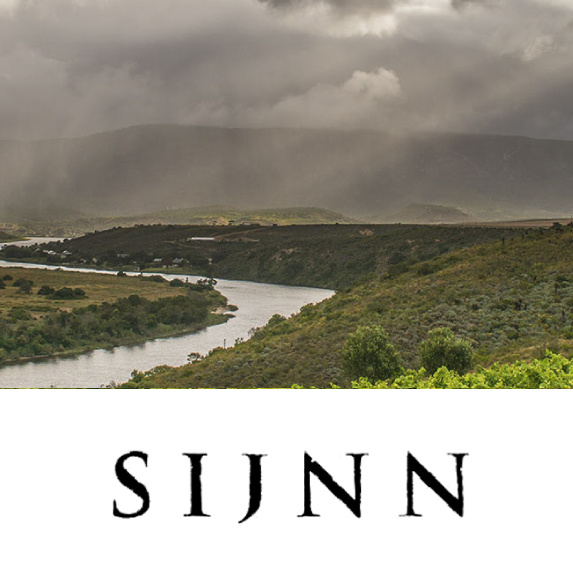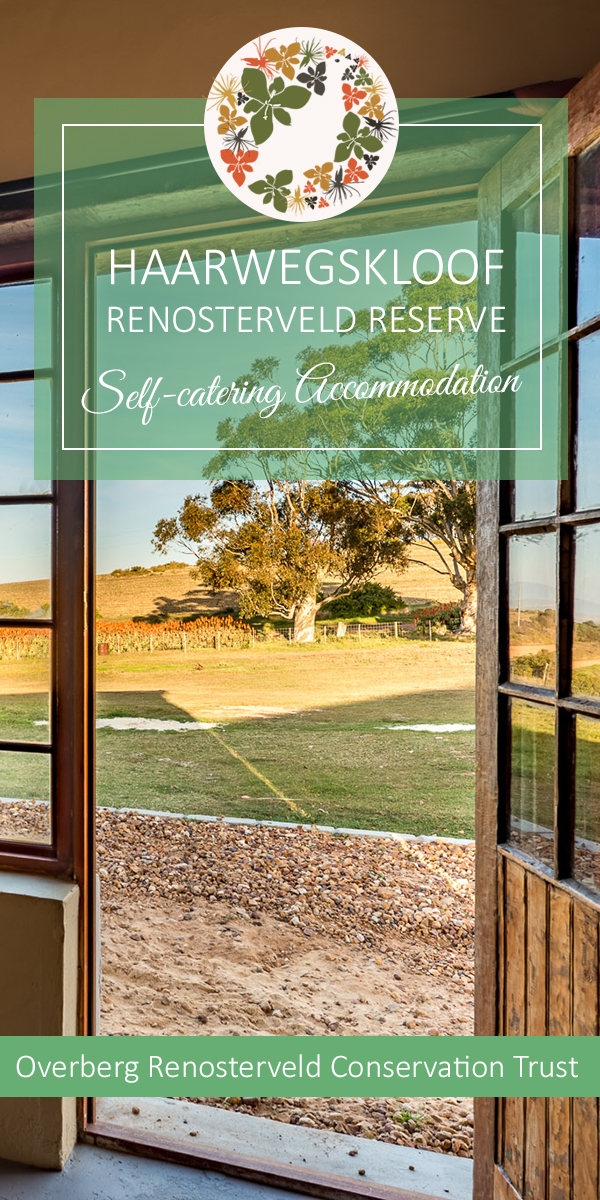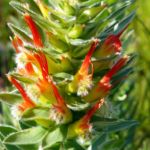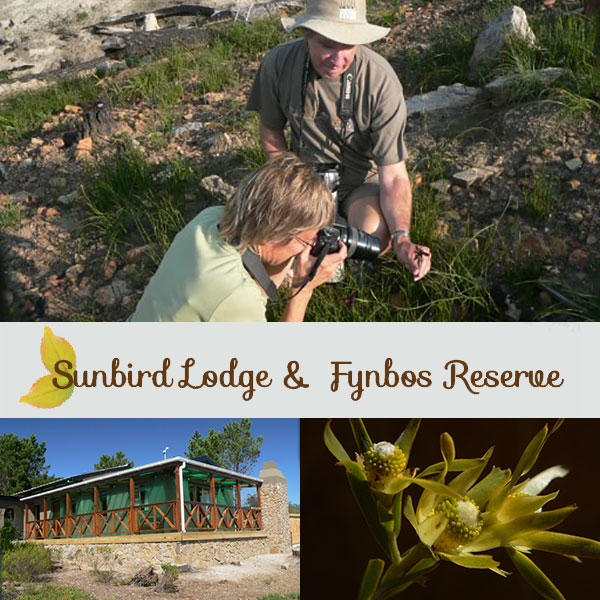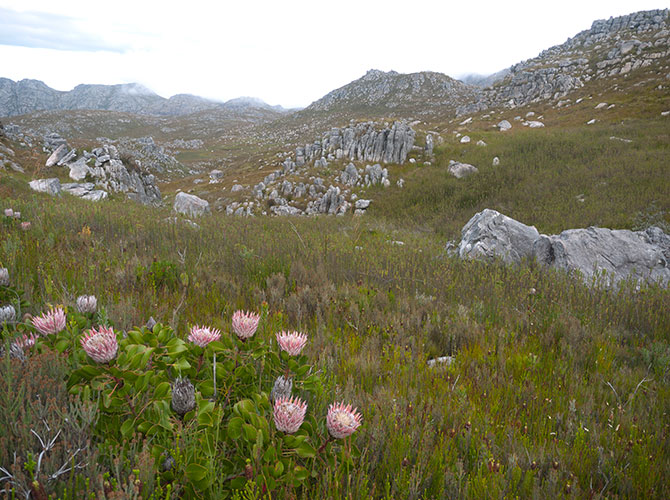
Easter exploration: Overnight in the Hottentots Holland Mountains
One of the greatest joys of Capetonian life is the ease with which one can escape the intensity of the city into pristine mountain wilderness. Just an hour out of town over Sir Lowry’s Pass lies the stunning, rugged and achingly beautiful Hottentots Holland Nature Reserve. It is here we chose to spend the Easter weekend.
The Hottentots Holland Mountains lie between the small settlement of Jonkershoek to the northwest, the scenic Franschhoek Pass and the orchards and vineyards of the Elgin Valley.
This range rises to the spectacular peaks of Somerset Sneeukop (1590m), Victoria Peak (1589m) and Dwarsberg (1523m) which are often capped with snow during the winter months and visible from as great a distance as the University of Cape Town’s Upper Campus nearly 100 km away. The Dwarsberg Plateau which forms part of this range holds the honour for being South Africa’s wettest place, receiving around 3,330 mm of rain per year.

Above: Erica viscaria ssp. longifolia. Photo © Zoë Chapman Poulsen.
One of the most notable creatures of these mountains is the shy and seldom seen Cape leopard. These big cats are unique in several respects: they are less than half the size of other African leopards and are consequently not considered a threat to humans. In addition, a Cape leopard’s territory is vast: and more than 10 times the size of their other African counterparts. A male Cape leopard will claim an area as large as 1,000 square kilometres encompassing the territory of 3-4 females.
In addition, the Hottentots Holland is home to several species of antelope, including grey rhebuck, klipspringer and common duiker. There are also shy nocturnal genets, honey badgers, porcupines and Cape clawless otters. Approximately 110 species of birds have been recorded in the reserve. However, the faunal diversity of these mountains is dwarfed by the botanical diversity of the mountain fynbos vegetation, with around 1,300 plant species occurring there.

Top: Struthiola striata. Above: Warm fire in Landdroskop Hut. Photo © Zoë Chapman Poulsen.
Over the Easter weekend, we hiked one of the shorter and easier sections of the famous Boland hiking trail, starting at the Nuweberg entrance and overnighting at Landdroskop Hut, which is nestled up on the plateau with spectacular views of the surrounding peaks. We ascended into the mountains via the Sphinx Trail, which after a steepish climb meanders through a beautiful valley between Nuweberg Peak and the headwaters of the Palmiet River eventually reaching the hut around four hours later.
The weather was perfect for hiking. The Hottentots Holland on a clear autumn day can lull unsuspecting hikers into a false sense of security. The conditions can change quickly and without warning clear sunshine can quickly become cold, swirling mist and driving rain or even blizzard conditions during the winter months.
People have become lost in these mountains when caught unprepared and paid the ultimate price for their mistake. So explore these mountains with respect, wisdom and clothing for all weather conditions.

Above: Erica viscaria ssp. longifolia. Photo © Zoë Chapman Poulsen.
As we climbed up into the mountains we were surrounded by magnificent stands of King Proteas (Protea cynaroides) in flower. In South Africa, this plant is honoured as the national flower. The genus is named after the Greek god Proteus, who could change his shape at will, owing to the diversity of colour, form and size within the 112 Protea species of the African continent.
The King Protea’s species epithet was described by the Swedish botanist Linnaeus according to its similarity to the flowers of the globe artichoke (Cynara scolymus). The huge flowers are pollinated by Scarab Beetles and Protea Beetles as well as by iridescent sunbirds and the long-tailed Cape sugarbird. The plant is adapted to survive multiple fires by resprouting after a burn from a woody underground stem.
We also encountered numerous Ericaceae in flower, including several different colour varieties of Erica viscaria ssp. longifolia. This shrub is common and widespread on mountain slopes from Mamre, Paarl and Worcester to the northeast of Cape Town to Bredasdorp in the Overberg region. It occurs in a variety of different colour forms and can range from green, white, yellow-green, red, pink and even bi-coloured. Flowering time varies according to the locality of the population.

Above: Early morning view from adjacent to Landdroskop Hut looking towards Boegoekloof and the mountains beyond. Photo © Zoë Chapman Poulsen.
The fynbos vegetation of the Cape Floristic Region is both fire-prone and fire-dependent. In the mountains of the Cape during the summer months temperatures can soar to more than 40⁰C and when accompanied by strong southeaster winds can lead to fires spreading over vast distances.
Natural veld fires can be ignited either by lightning strikes or by sparks derived from falling rocks crashing against each other. If fires occur outside the natural fire season they can be of severe ecological detriment to the fynbos and so hikers should take great care and only make fires where they are permitted by park/reserve officials and within fireplaces provided.

Above: Landdroskop Hut with its namesake mountain behind. Photo © Zoë Chapman Poulsen.
One of the joys of Landdroskop Hut is the central fireplace within the communal space where we nestled in good company with a well-earnt dinner and glass of wine during a cold mountain evening. This is also not to mention a few too many Easter eggs carried carefully up from Nuweberg…..
Find me on Instagram
Plant Information
Connect on Social
Connect on Facebook, Twitter and Instagram
Taking Action
There are many environmental organisations based in Cape Town and beyond that require the services of volunteers to undertake their work. So if you have a little time to spare please get involved.

